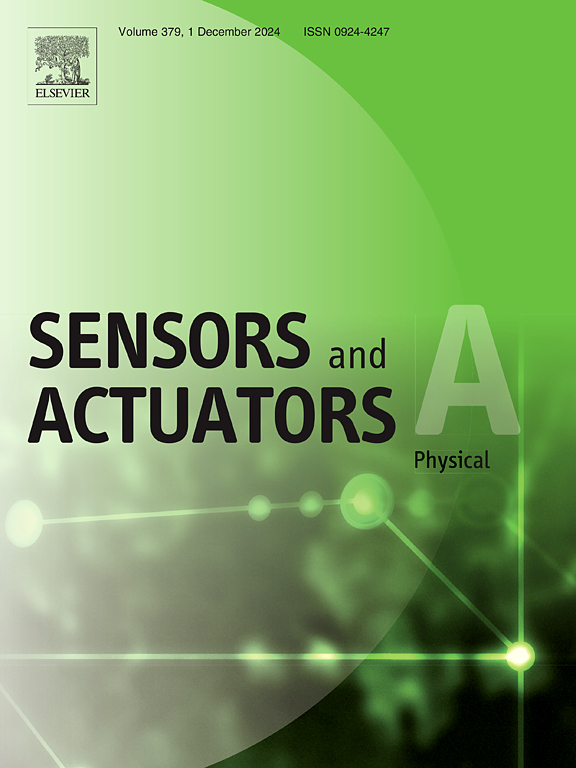Chlorophyll fluorescence sensing for smart agriculture
IF 4.9
3区 工程技术
Q2 ENGINEERING, ELECTRICAL & ELECTRONIC
引用次数: 0
Abstract
Chlorophyll fluorescence sensing technology, with its increasing application in smart agriculture, is particularly impactful in agricultural cultivation, aquaculture, and food monitoring. This technology reflects the physiological state of plants and environmental changes in real-time, based on the fluorescence response in photosynthesis of plant leaves. With high sensitivity, real-time monitoring, and non-destructive detection, the technology becomes an important monitoring tool in smart agriculture. In agricultural cultivation, chlorophyll fluorescence sensing technology can assess the efficiency of crop photosynthesis, providing real-time data support for precision agriculture. Furthermore, this technology contributes to detecting potential problems, such as water stress and pests and diseases to optimize agricultural management. In aquaculture, the technology can be used for water quality monitoring and assessment of algal growth status, promoting the fine management of the aquaculture environment. For food monitoring, chlorophyll fluorescence sensors can realize real-time detection of food quality and safety by analyzing the fluorescence characteristics of plant components. This review analyzes the application of chlorophyll fluorescence sensing technology in smart agriculture, discusses its technical advantages, application limitations, and challenges, and elaborates on its potential to promote sustainable agricultural development.
智能农业叶绿素荧光传感
叶绿素荧光传感技术在智慧农业中的应用越来越广泛,在农业种植、水产养殖、食品监测等方面具有重要意义。该技术基于植物叶片光合作用中的荧光响应,实时反映植物的生理状态和环境变化。该技术具有高灵敏度、实时监测、无损检测等特点,成为智慧农业的重要监测工具。在农业栽培中,叶绿素荧光传感技术可以评估作物光合效率,为精准农业提供实时数据支持。此外,这项技术有助于发现潜在的问题,如缺水和病虫害,以优化农业管理。在水产养殖中,该技术可用于水质监测和藻类生长状况评价,促进水产养殖环境的精细化管理。在食品监测方面,叶绿素荧光传感器通过分析植物成分的荧光特性,实现对食品质量安全的实时检测。本文分析了叶绿素荧光传感技术在智慧农业中的应用,讨论了其技术优势、应用局限和面临的挑战,并阐述了其促进农业可持续发展的潜力。
本文章由计算机程序翻译,如有差异,请以英文原文为准。
求助全文
约1分钟内获得全文
求助全文
来源期刊

Sensors and Actuators A-physical
工程技术-工程:电子与电气
CiteScore
8.10
自引率
6.50%
发文量
630
审稿时长
49 days
期刊介绍:
Sensors and Actuators A: Physical brings together multidisciplinary interests in one journal entirely devoted to disseminating information on all aspects of research and development of solid-state devices for transducing physical signals. Sensors and Actuators A: Physical regularly publishes original papers, letters to the Editors and from time to time invited review articles within the following device areas:
• Fundamentals and Physics, such as: classification of effects, physical effects, measurement theory, modelling of sensors, measurement standards, measurement errors, units and constants, time and frequency measurement. Modeling papers should bring new modeling techniques to the field and be supported by experimental results.
• Materials and their Processing, such as: piezoelectric materials, polymers, metal oxides, III-V and II-VI semiconductors, thick and thin films, optical glass fibres, amorphous, polycrystalline and monocrystalline silicon.
• Optoelectronic sensors, such as: photovoltaic diodes, photoconductors, photodiodes, phototransistors, positron-sensitive photodetectors, optoisolators, photodiode arrays, charge-coupled devices, light-emitting diodes, injection lasers and liquid-crystal displays.
• Mechanical sensors, such as: metallic, thin-film and semiconductor strain gauges, diffused silicon pressure sensors, silicon accelerometers, solid-state displacement transducers, piezo junction devices, piezoelectric field-effect transducers (PiFETs), tunnel-diode strain sensors, surface acoustic wave devices, silicon micromechanical switches, solid-state flow meters and electronic flow controllers.
Etc...
 求助内容:
求助内容: 应助结果提醒方式:
应助结果提醒方式:


